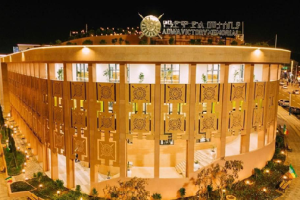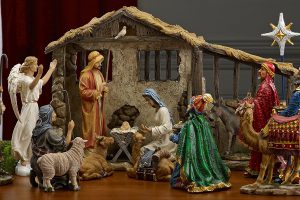BY ABEBE WOLDEGIORGIS
Looking from the historical perspective, art activities were started before the introduction of Christianity. At that time sculpture did exist. Due to the contact with foreign countries painting came to Ethiopia in 4th century, said Girma Bulti Fine Arts Curator in the Ethiopian Fine Arts Heritage.
As to Girma, earlier for the teaching purpose of Christianity, biblical stories were illustrated on the walls of the inside part of the churches in the form of narration. This venture created the opportunity for the development of fine and arts in this country.
Though paintings were an indigenous experience, the coming of foreigners further strengthened the practice. Local painters were using flower powders, soil and clays for coloring purpose.
From the 4th century onwards the Coptic and the byzantine art culture influenced the way of local paintings. The art of painting also started to pick steam for the purpose of decorating churches and monasteries. It served as an instrument for the expansion of the Christianity.
Collection of paintings was also undertaken inside and outside the church compound.
The coming of foreigners who had experience in art paintings helped local painters to blend the traditional paintings with the outside one.
The traditional paintings continued up to the era of King Lalibela, who built the Rock-Hewn Church in the 11th century. The styles were made to continue up to the 16th century.
The two-dimensional paintings were portraying biblical stories in a narrative way.
Later, the coming of foreigners played a crucial role in transforming the two-way dimension in to three which proportionated distance, proximity, darkness and light.
It has an objective of conveying messages to viewers.
For example, drawing big elliptical eyes, the domination of Saint Mary from Egypt and the style of the paintings focused on the message and the background. It also has a tendency towards realism.
The three-dimensional painting style adopted from foreign painters served for making decoration of palaces. Such style of painting developed as a modern one up to the 20 century.
The expansion of modern way of fine arts gradually eroded the originality of the religious way of paintings. In the religious art the painter is confined in limited creativity. It presents biblical narratives without adding or deducting.
The realistic approach came through secularism provided space to the painters to broaden their imagination and enhance creativity. Nowadays, painters have begun to draw kings, heroes and battlefront achievements. At this stage art became a more independent profession.
The religious painter was only allowed to explain about God and his creations and spiritual-ness of human beings. The artist was not allowed to write his name under the picture and such rules discouraged the activities of people to know the owner of the paintings.
The transition from religious to secular art gave way to artists to explain the day to day activities of the society. They began to depict their own literature through three-dimensional painting. The Ethiopian culture of dining, wedding, grieving and expressing happiness events began to be reflected.
However, according to Victor an art historian, due to the development of paintings through the influence of European art, Ethiopian artists seem to have lost their original and cultural religious painting style.
According to Girma, the modern painting style exposed the Ethiopian culture to the outside world. Tourists introduced Ethiopian artists oversees this in turn strengthened ties with foreign countries. Currently, many Ethiopian fine arts and paintings are available in museums abroad.
In the 17th century, when Gonderian kings established their kingdom modern art got expanded.
The paintings were named after “Gonder”. Even if at that time arts were originated religiously, they were developed in secular and cultural styles.
As to Girma, earlier from the beginning of religious arts human beings drew pictures on the wall of their caves. That is why linguists say that the first mankind’s’ language was picture.
Later art materials began to serve for bartering commodities in the market. After that art began to be utilized for religious purposes. Later to the secular purposes and in all countries arts developed in such manner.
The transition of traditional arts into the modern one did not go in a smooth manner rather it went topsy-turvy until it got acceptance by upper and lower class of the society.
In the 20th century, the first artists who learnt fine arts abroad among others were the renowned Alefelege Selam and Afework Teklie. Later Tadesse Belayneh and Tadesse Mamecha attended their art education abroad. Other artists also learned in Britain, France and Russia.
Alefelege Selam played a pivotal role in establishing the first art school with the consent of Emperor Haile Selassie I in Addis Ababa.
He prepared arts education category and curriculum and taught paintings to Ethiopian art students in a globalized manner.
As to Girma, as compared to the previous time, societies attitude towards art is changed and improved. The expansion of education and the exposure of Ethiopians to foreign cultures and ways of life contributed to this development.
The demand for Ethiopian paintings by foreigners and local hotel owners increased from time to time. Currently, looking paintings in exhibitions and mansions, hotels and residential homes is common.
The rising of income of artists also motivated them to display more devotion for the profession. The National Museum is trying its level best to encourage artists by preserving their work and organizing events. However, to enhance its institutional works, it should conduct researches, panel discussions and art exhibitions.
The Ethiopian Herald February 4/2021





